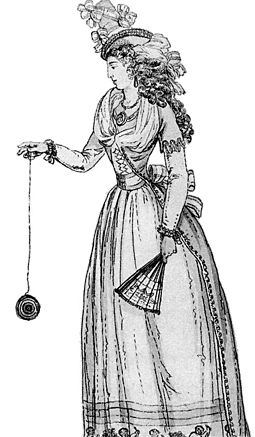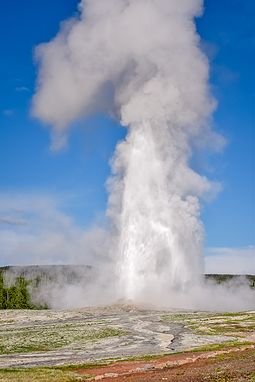A zebra is the name given to striped memories of the horse family. They live in Africa, south of the Sahara desert.
There is three species of zebras: the plains zebra, the mountain zebra and the Grévy's zebra. The plains zebra is about 47–51 inches (1.2–1.3 m) at the shoulder with a body ranging from 6.6–8.5 feet (2–2.6 m) long with a 20 inch (0.5 m) tail. It can weigh up to 770 lbs (350), males being slightly bigger than females. Grévy's zebra is considerably larger, while the mountain zebra is somewhat smaller.
All zebras have very short fur because they live in hot areas. Their fur has black and white stripes.
The "background" color of each zebra is black, and the white stripes are on top.
Just like human fingerprints, a zebra's stripe pattern is unique to the individual.
Zebras have black and white stripes to battle against the parasites. Apparently, the horse flies are not able to land properly on zebras due to their stripes. They also act as camouflage against the desert and mountainous background.
 |
| Pixiebay |
ANATOMY
There is three species of zebras: the plains zebra, the mountain zebra and the Grévy's zebra. The plains zebra is about 47–51 inches (1.2–1.3 m) at the shoulder with a body ranging from 6.6–8.5 feet (2–2.6 m) long with a 20 inch (0.5 m) tail. It can weigh up to 770 lbs (350), males being slightly bigger than females. Grévy's zebra is considerably larger, while the mountain zebra is somewhat smaller.
All zebras have very short fur because they live in hot areas. Their fur has black and white stripes.
The "background" color of each zebra is black, and the white stripes are on top.
Just like human fingerprints, a zebra's stripe pattern is unique to the individual.
Zebras have black and white stripes to battle against the parasites. Apparently, the horse flies are not able to land properly on zebras due to their stripes. They also act as camouflage against the desert and mountainous background.
The zebra's black and white stripes also create confusion when the animal moves - known as 'motion dazzle' - making it difficult for predators to focus on them.
Scientists have built a device that can scan the pattern of stripes on zebras, as if it were a bar code, in order to differentiate between them.
Zebras mainly eat grass, but they also eat fruit, leaves and some vegetables.
If a zebra is attacked, its family will come to its defense, circling the wounded zebra and attempting to drive off predators.
Zebra stallions that win a harem from another male may have to wait three years before the mares in his herd will accept him as the new stud.
Zebras were trained by the Romans to pull chariots around the circuses. They even gave the stripy animal the name “hippotigris”, meaning “Horse-tiger.”
Zebra” is the only common English word that comes from Congolese. It dates back to 1600.
The Grévy's Zebra species was named after Jules Grévy, President of France from 1879-1887. In 1882, Emperor Menelik II of Abyssinia gave Grévy a zebra and “Grévy's Zebra” stuck.
Walter Rothschild, who once housed one of the largest natural history collections in the world, had a famed zebra carriage. He once he drove it to Buckingham Palace to demonstrate the tame character of zebras to the public.
Zebras were never domesticated because they have a ducking reflex and bite and kick more than horses.
A group of zebras is called a "dazzle."
The zebra is the national animal of Botswana. The black band with the white frame in the country's flag represents the stripes of the zebra. Also the coat of arms of Botswana is based on a shield supported by two zebras.
Scientists have built a device that can scan the pattern of stripes on zebras, as if it were a bar code, in order to differentiate between them.
BEHAVIOR
Zebras mainly eat grass, but they also eat fruit, leaves and some vegetables.
 |
| Pixiebay |
If a zebra is attacked, its family will come to its defense, circling the wounded zebra and attempting to drive off predators.
Zebra stallions that win a harem from another male may have to wait three years before the mares in his herd will accept him as the new stud.
ZEBRAS IN HISTORY
Zebras were trained by the Romans to pull chariots around the circuses. They even gave the stripy animal the name “hippotigris”, meaning “Horse-tiger.”
Zebra” is the only common English word that comes from Congolese. It dates back to 1600.
The Grévy's Zebra species was named after Jules Grévy, President of France from 1879-1887. In 1882, Emperor Menelik II of Abyssinia gave Grévy a zebra and “Grévy's Zebra” stuck.
Walter Rothschild, who once housed one of the largest natural history collections in the world, had a famed zebra carriage. He once he drove it to Buckingham Palace to demonstrate the tame character of zebras to the public.
 |
| Rothschild with his famed zebra carriage |
Zebras were never domesticated because they have a ducking reflex and bite and kick more than horses.
FUN ZEBRA FACTS
A group of zebras is called a "dazzle."
The zebra is the national animal of Botswana. The black band with the white frame in the country's flag represents the stripes of the zebra. Also the coat of arms of Botswana is based on a shield supported by two zebras.
Each year, zebras are responsible for more injuries to American zookeepers than any other animal.
Source Daily Express































